Affiliate links on Android Authority may earn us a commission. Learn more.
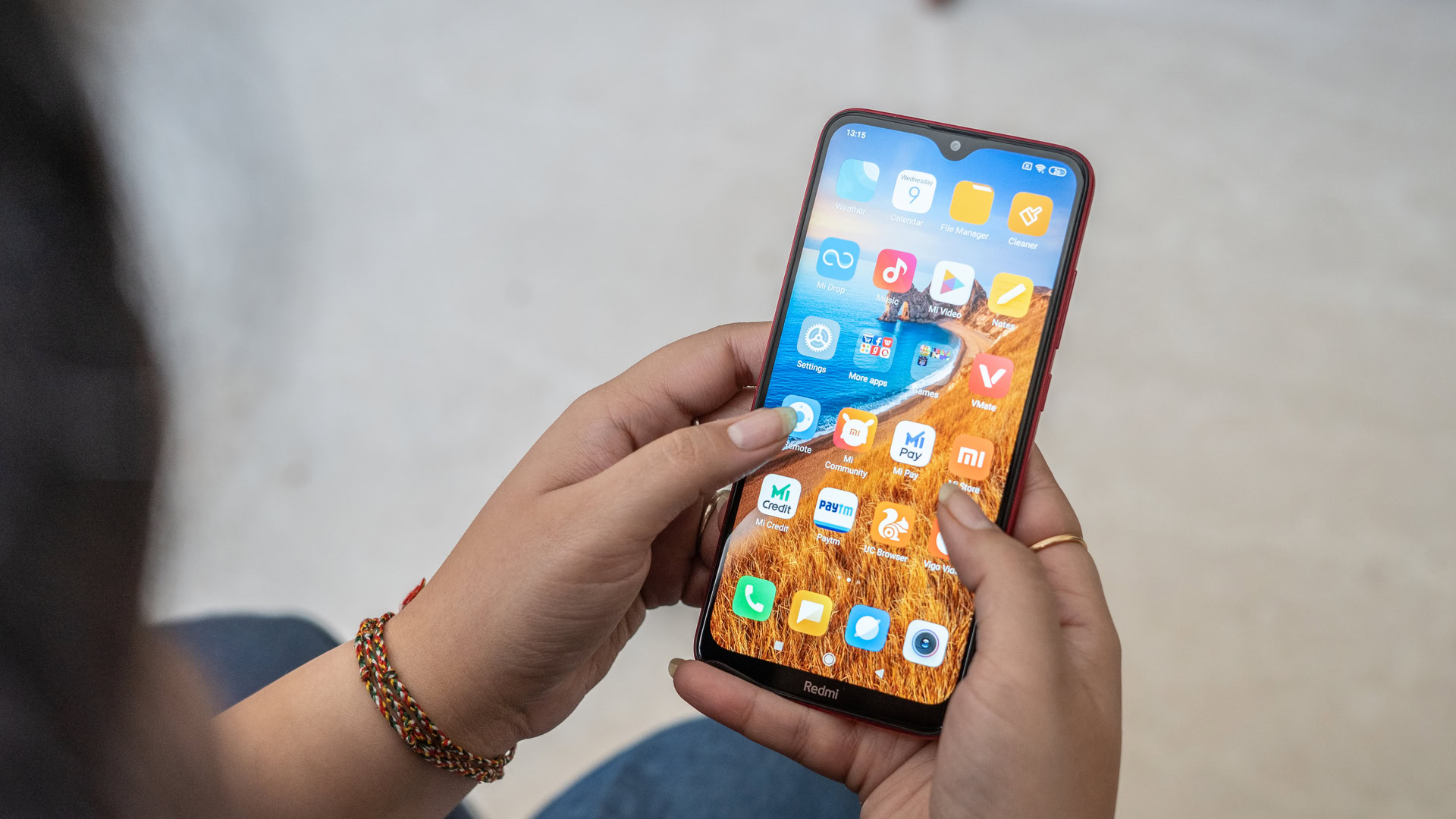
Redmi 8
What we like
What we don't like
Redmi 8
Xiaomi’s dominance of the entry-level market was built on the back of the Redmi series. However, the entry of Realme, and its focus on vibrant designs has put a dent in Xiaomi’s momentum. realme increased its shipments in India by over 600% in the second quarter of 2019. It comes as no surprise then that Xiaomi is stepping outside its comfort zone, and is reworking its design language across the board.
Update: May 16, 2020: We have updated our Redmi 8 review with details on software updates and pricing.
Redmi 8 review: Premium design at a budget
After years of sticking to a design language, we’re in a phase where Xiaomi is making sweeping changes with every new release. We saw it on the Redmi 8A, and the Redmi 8 continues to channel a very premium-looking design.
This is still a budget phone though, so construction continues to be polycarbonate through and through. It feels premium to the touch, but the glossy hardware catches on fingerprints and I’m not too sure about how well it’ll hold up against scratches. You’ll definitely want to invest in a quality case. Xiaomi has tossed in a TPU case in the box to get you started. There’s a fingerprint scanner at the back. The location is near perfect and it is a cinch to reach out and unlock the phone. It further helps that the scanner is very quick as well.
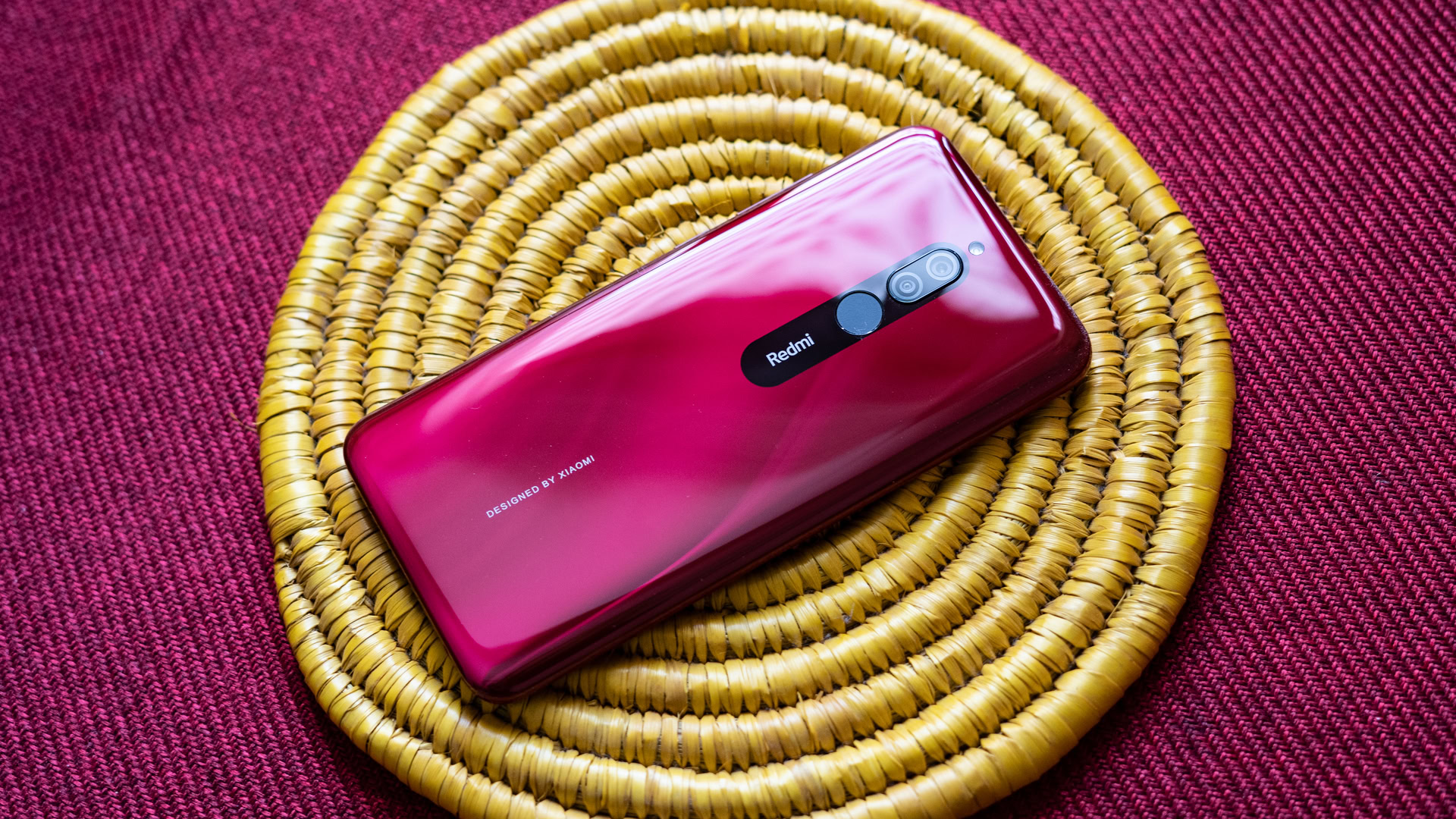
Typically Xiaomi, the hardware is well built, and other than the buttons that sit flush with the body of the phone, I couldn’t find much to complain about here. With the Redmi 8 series of phones, Xiaomi has finally transitioned the entire line-up to USB-C and I couldn’t be happier about it. Oh, and unlike the Redmi 8A, the Redmi 8 keeps the popular IR blaster feature.
There’s a headphone jack, of course, and audio output over it sounds fine. The phone has a FM radio as well, along with a built-in antenna so that you can use it over the speaker. This is a very nifty feature for a market like India, where terrestrial radio is still exceedingly popular.
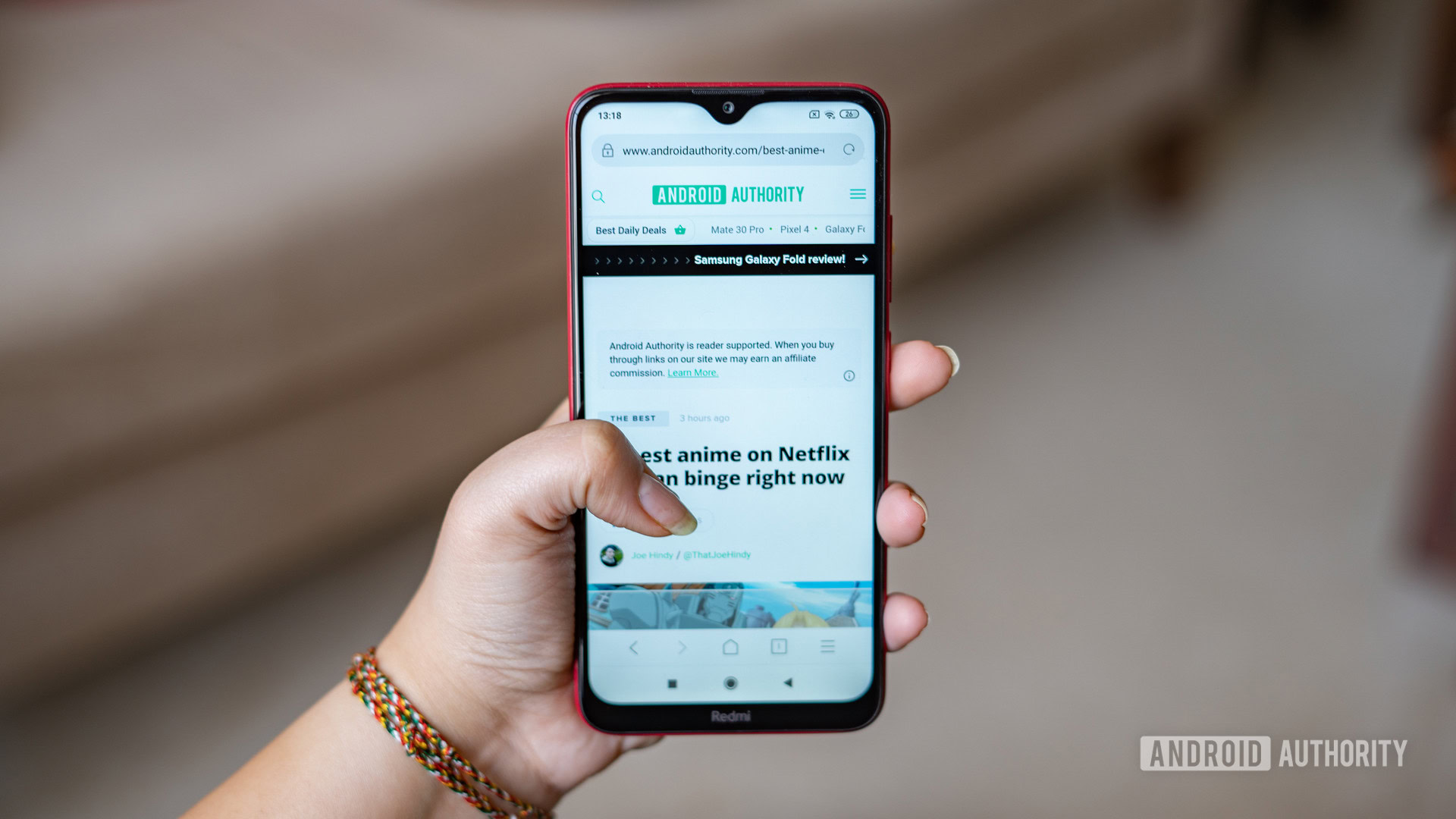
The front of the Redmi 8 is very similar to the Redmi 8A, right down to the display. In fact, it appears that this is the same 6.2-inch IPS LCD display from the 8A. There’s a waterdrop notch, as well as a prominent chin with Redmi branding. The panel gets bright enough for outdoor use, but the glossy finish means that you might not be able to see it too well in bright sunlight. You do get Gorilla Glass 5 though, so it should handle daily use reasonably well. Color reproduction errs on the side of muted, but there’s a software setting to boost contrast. Pixel peeping reveals a bit of softness around icons due to the 720 x 1,520 resolution, but I suspect most users won’t be bothered by this.
I like Xiaomi’s renewed focus on design. Much more than the aggressive design language of the K-series, the Redmi 8 and 8A look elegant while still being interesting to look at. The ruby-red color we have on hand looks stunning, and it is astonishing to see how far budget hardware has come.
How is the Redmi 8’s performance?
For better or worse, the internals of the Redmi 8 are the same as the Redmi 8A. The Snapdragon 439 chipset gets carried over from the entry-level phone, but the Redmi 8 ships with a minimum of 3GB of RAM. You can step up to a variant with 4GB of RAM as well. Storage varies between 32GB and 64GB depending on the variant. The choice of processor on the Redmi 8 is interesting, considering it is a step back from the Snapdragon 632 we saw on the Redmi 7. Of course, the phone has dedicated dual-SIM slots, as well as one for a microSD card.
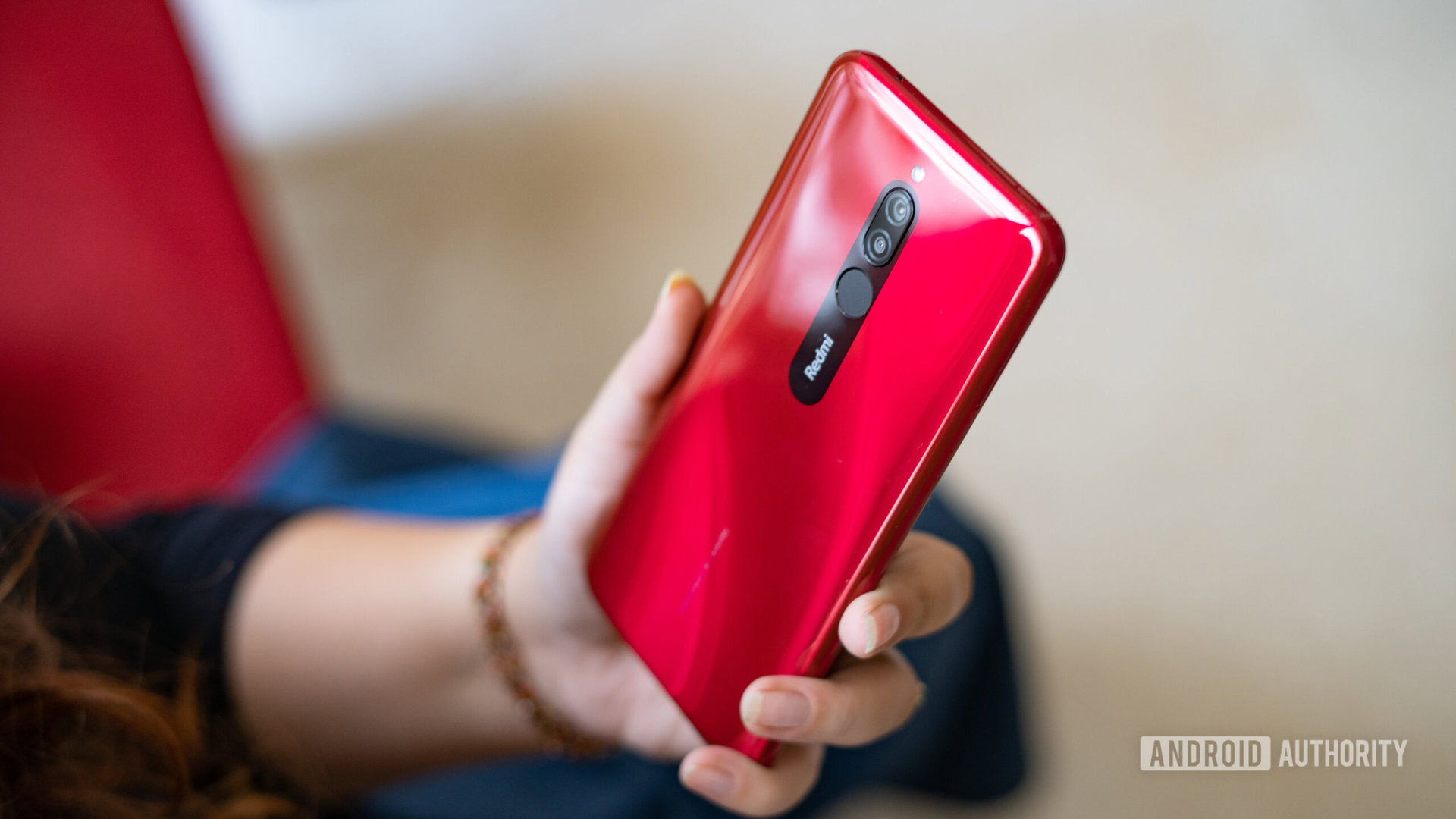
General performance on the phone is fine, but nothing to write home about. It’ll do the trick for daily use and juggling between apps poses no problem. Then again, this is true for most phones these days. Where you do notice a lack of prowess is in graphics processing. Gaming isn’t a very enjoyable experience and running a PUBG campaign is a mixed bag. Sure, the game is playable, but there are noticeable frame drops.
Gaming on the Redmi 8 isn't the most enjoyable experience.
There’s no difference at all in the software experience. This is the same MIUI 10 on Android Pie that you either love or hate. Say what you will, you can’t fault the fluidity of MIUI. There’s ample features for power users and you can customise the user experience to a large degree. From gestures to the ability to switch around button layouts as well as a robust home screen customisation experience, as well as support for themes, you can really make the phone your own.
The caveat, of course, is the sheer amount of preloaded content. I get the entire internet services business model, but 20-something pre-installed applications with wide-ranging requirements for user permissions just doesn’t inspire confidence.
For a budget device, Xiaomi has been rather good at keeping the Redmi 8 up-to-date. The phone last got a software update in April that brought along the March 2020 security patch in addition to app lock support for all applications. Before that, there have been a series of security patches as well as feature updates including performance optimizations and fresh system apps.
How big is the battery on the Redmi 8?
It appears that Xiaomi is pushing for even larger batteries this year, and I definitely can’t complain about that. Following the Redmi 8A, the Redmi 8 ships with a large 5,000mAh cell. The battery paired with entry-level hardware lasts forever. I struggled to deplete the battery with two days of use. It charges reasonably fast too. There’s support for 18W fast-charging, and a 10W brick is included in the box.
How’s the camera on the Redmi 8?
As we’ve established, there’s a lot of commonalities between the Redmi 8 and the Redmi 8A. This includes the camera as well, which uses a 12MP Sony IMX363 sensor. Yes, this sensor was found in the Pixel 3a series. No, the image quality definitely doesn’t match up. Software is just as big a part of image processing as is the hardware, and the Redmi 8 doesn’t quite match up.
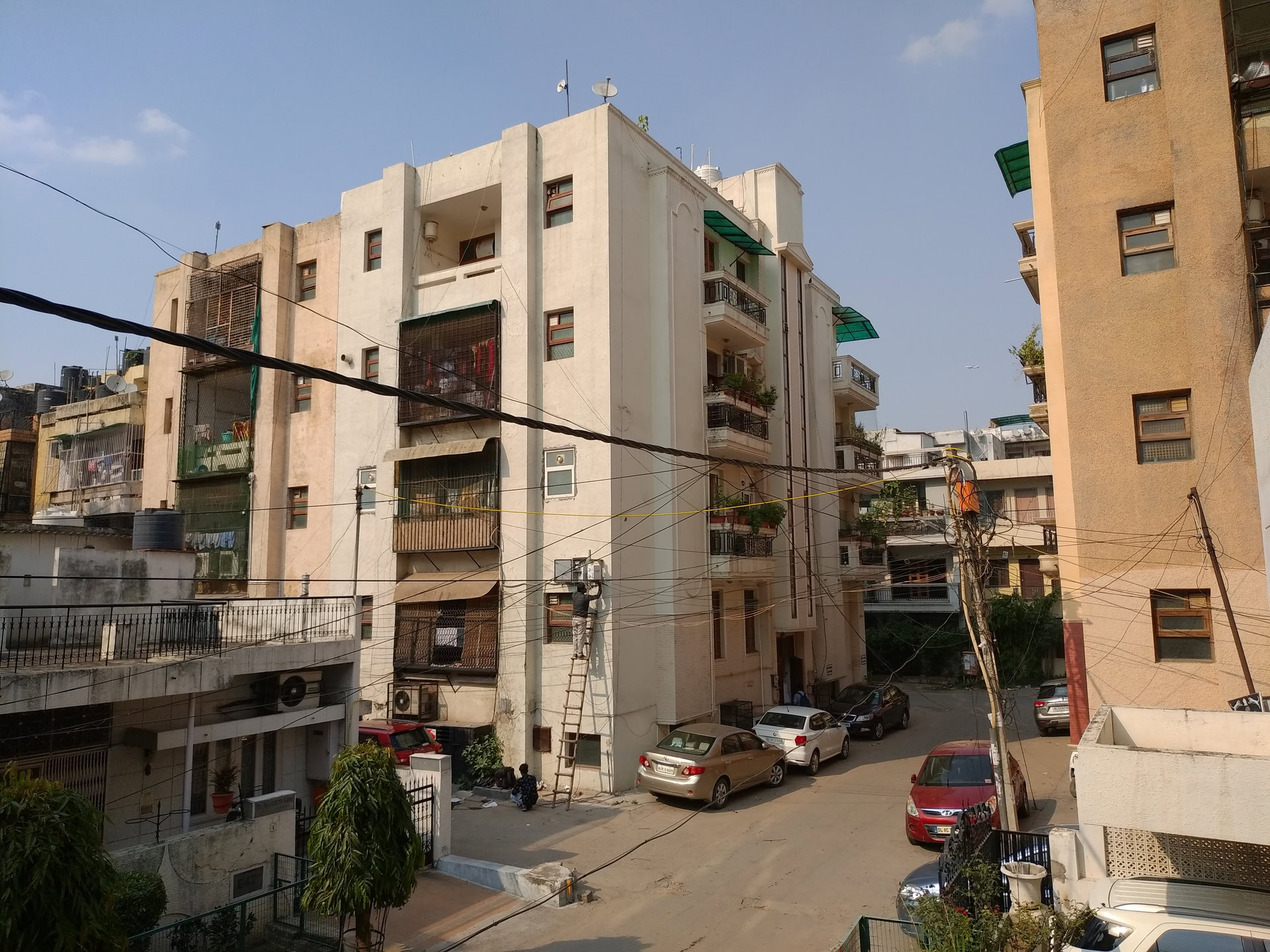
Image quality is passable with limited dynamic range. The camera has a tendency to blow out highlights. Despite support for dual-pixel autofocus, I observed that the camera constantly hunted to get a focus lock. Outdoor shots look good enough with Xiaomi’s AI enhancements kicking in to deliver punchy images.
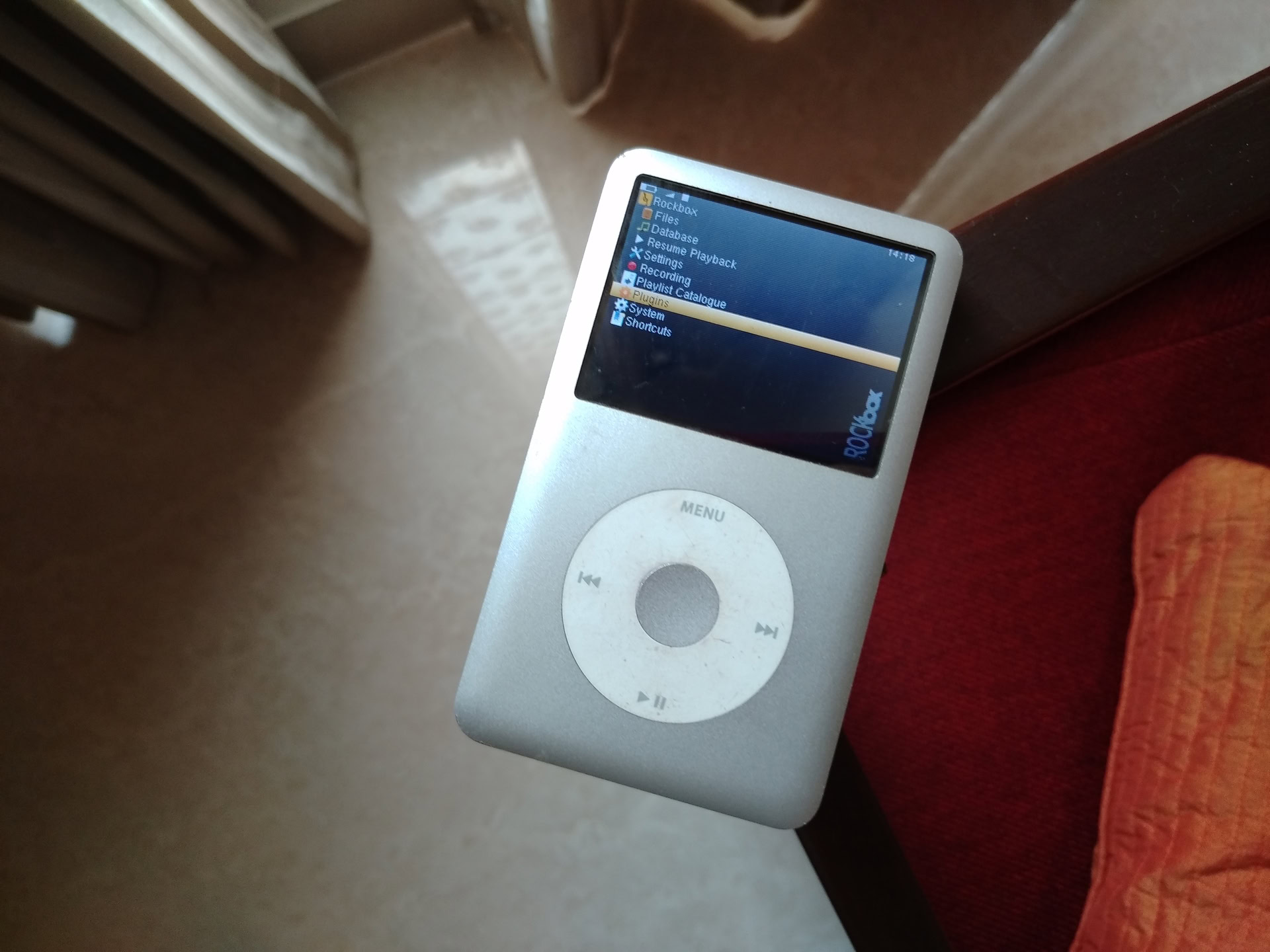
Images have a pervasive softness to them in anything less than perfect light. Indoor images tend to be pretty short on details. Couple that with aggressive noise reduction, and low-light shots suffer. The Redmi 8 gets a dedicated secondary camera to enable portrait mode, and while edge detection wasn’t too bad, getting a solid focus lock and good exposure balance is still a challenge.
Video recording maxes out at 1080p and 30fps video. It looks fine in broad daylight and not so much in anything less than that. For all of Xiaomi’s claims, the camera is perhaps the weakest element of the Redmi 8.
Redmi 8 specifications
| Redmi 8 | |
|---|---|
Display | 6.22-inch IPS LCD 720 x 1,520 resolution Gorilla Glass 5 |
SoC | Qualcomm Snapdragon 439 (12 nm) Octa-core CPU (4x 1.95GHz + 4x 1.45GHz) |
GPU | Adreno 505 |
RAM | 3GB/4GB RAM |
Storage | 32GB/64GB Expandable with microSD card (up to 512GB) |
Cameras | Rear: 12MP sensor (Sony IMX363, 1.4μm pixel size f/1.8 aperture) LED flash 2MP depth sensor Front: 8MP camera with face unlock |
Battery | 5,000mAh non-removable 18W charging (10W charger included) USB-C |
Connectivity | 3.5mm port Bluetooth 4.2 GPS GLONASS Wi-Fi 802.11 b/g/n USB-C |
Network | Dual SIM slots GSM: B2/3/5/8 WCDMA: B1/2/5/8 LTE TDD: B40/41 LTE FDD: B1/3/5/8 |
Sensors | Accelerometer Ambient Light E-compass Fingerprint Proximity |
Software | Android 9.0 Pie with MIUI 10 |
Dimensions and weight | 156.5 x 75.4 x 9.4mm 188 grams |
Is the Redmi 8 good value for money?
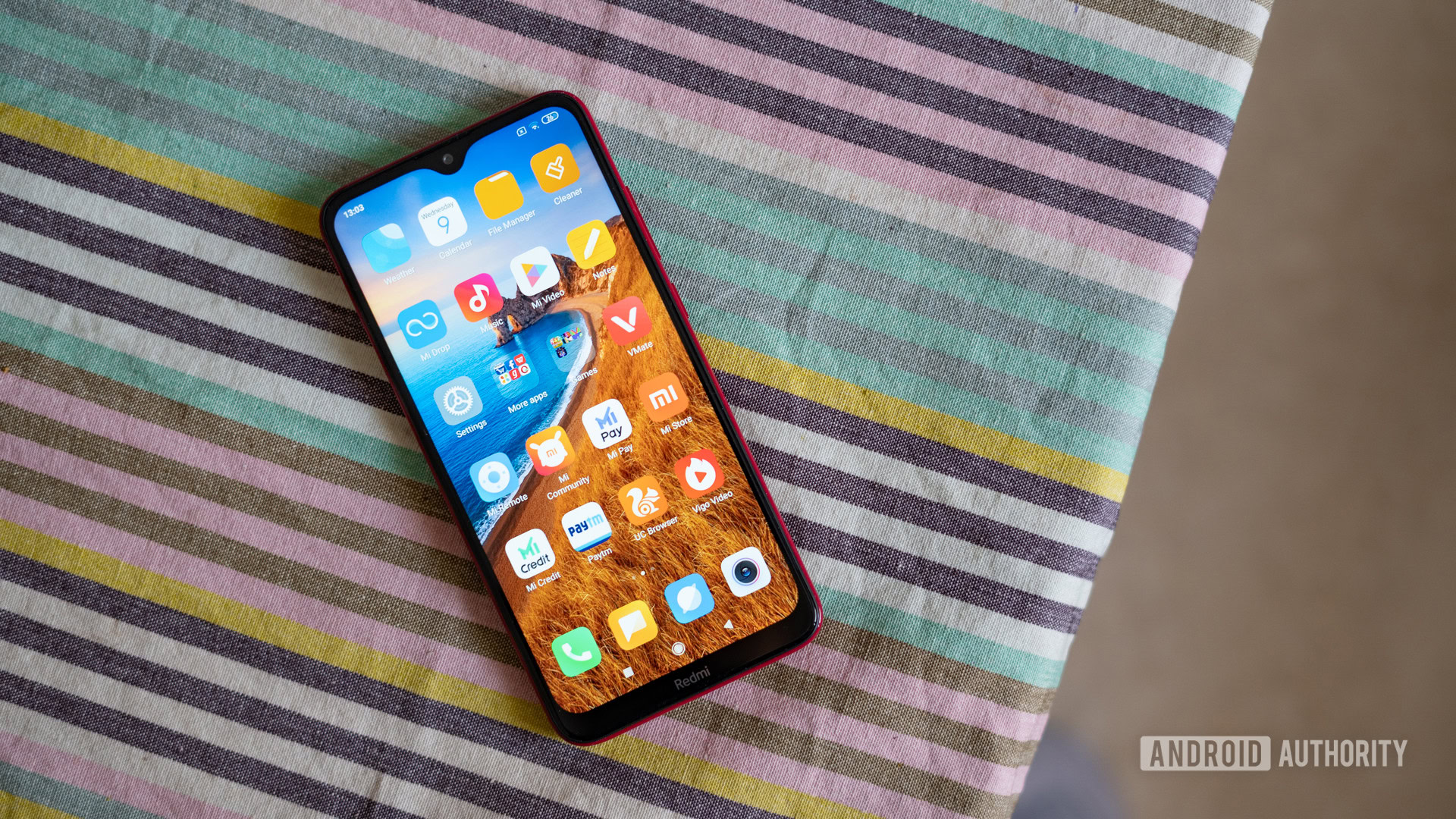
- Redmi 8 4GB RAM, 64GB storage — Rs. 8,999 (~$118)
Xiaomi debuted the Redmi 8 with a promotional discount of Rs. 1000 for the first 5 million units, however, that’s not the case any more. To be fair, it is a great piece of kit, even though it doesn’t really push the boundaries of performance or imaging. I love the look and feel of the hardware, and Xiaomi has made quality-of-life improvements in features like the battery. That matters a lot in the segment the Redmi 8 competes in.
Of course, the phone has a significant competitor in the realme C3. That phone undercuts the Redmi 8 in price while also offering more power for the buck. There’s also something to be said about realme’s superior image processing algorithms.
It might not be the most exciting phone around, but the Redmi 8 has plenty to offer if you are looking for a new phone in the segment.
What do you think about the Redmi 8? Let us know in the comments section.